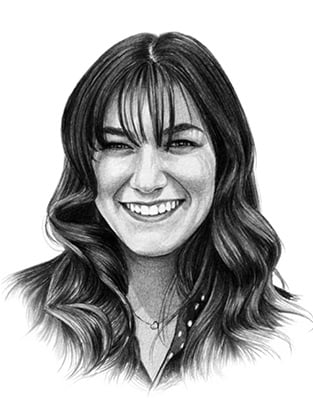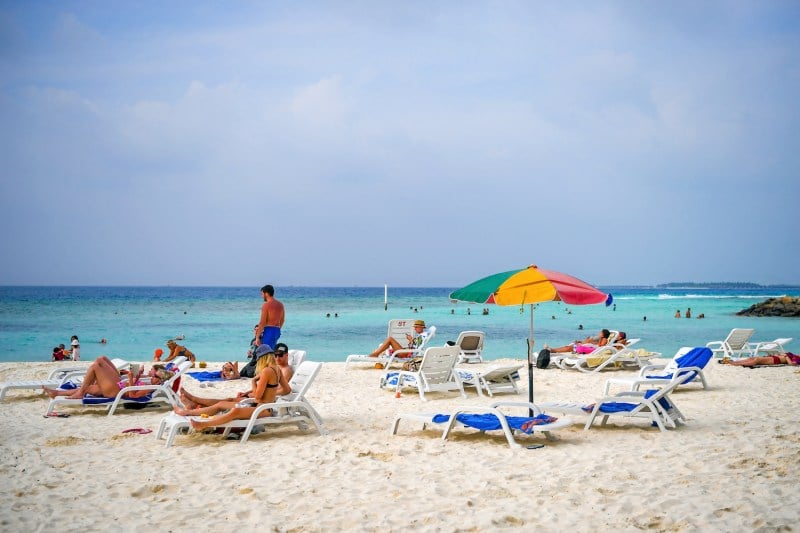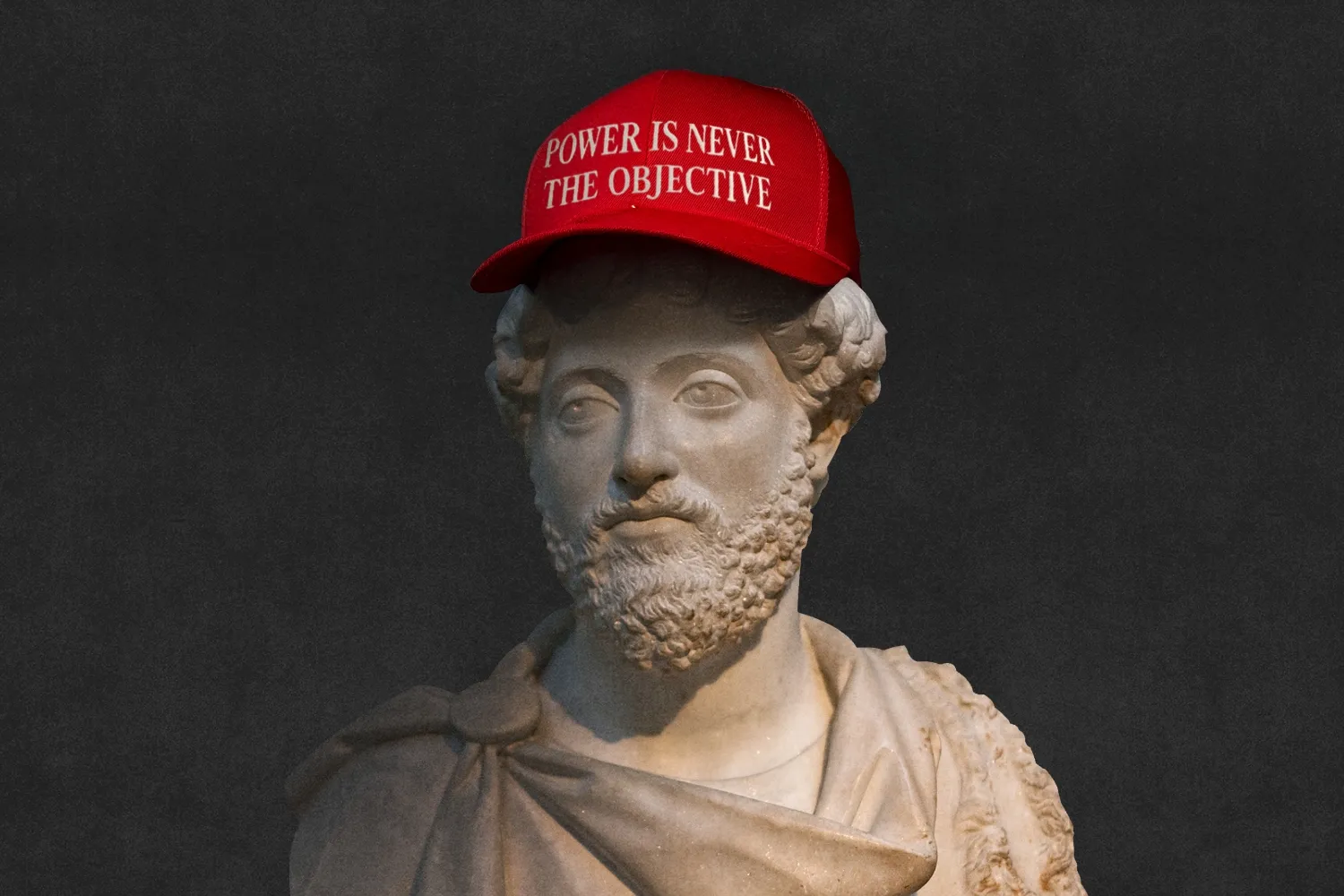Can a Conservative Win Back Canada?

Profile
Can a Conservative Win Back Canada?
Pierre Poilievre’s path to power looked assured—until Donald Trump returned.
Canadian Conservative Party leader Pierre Poilievre speaks during a campaign event in Montreal on April 14. Andrej Ivanov/Getty Images
In 1999, Pierre Poilievre, then a 20-year-old commerce student at the University of Calgary, pulled an all-nighter to enter a national essay contest with the prompt, “As prime minister, I would…”
Poilievre titled his submission “Building Canada Through Freedom” and filled it with libertarian gusto, saying he would “relinquish to citizens as much of my social, political, and economic control as possible.” Although he did not win the competition, he was a finalist.
In 1999, Pierre Poilievre, then a 20-year-old commerce student at the University of Calgary, pulled an all-nighter to enter a national essay contest with the prompt, “As prime minister, I would…”
Poilievre titled his submission “Building Canada Through Freedom” and filled it with libertarian gusto, saying he would “relinquish to citizens as much of my social, political, and economic control as possible.” Although he did not win the competition, he was a finalist.
More than 25 years later, Poilievre is campaigning to become prime minister for real. His pitch ahead of Canada’s April 28 snap elections hasn’t changed much: “Canadians can take back control of their lives and their country,” he said in a video posted to X in January.
Three months ago, Poilievre’s victory looked certain, but he is now watching his chances of forming a government shrink. Since U.S. President Donald Trump took office in January, Poilievre’s Conservatives have gone from holding a 20-point polling lead over the Liberals to falling several points behind.
Canada is facing both tariffs and threats of annexation from the United States, its closest neighbor, ally, and trading partner. Canadians are overwhelmingly united against Trump’s neo-manifest destiny and in search of a leader who is willing and capable of resisting.
Unfortunately for Poilievre, many voters perceive him as too much like Trump. Sixty percent of Canadians have an unfavorable view of Poilievre—and according to pollster Angus Reid, less than 30 percent think that Poilievre is the better choice for prime minister. He has just days left to convince them otherwise.
Poilievre addresses a “Spike the Hike: Axe the Tax” rally in Edmonton, Alberta, on March 27, 2024.Artur Widak/NurPhoto via Getty Images
For decades, Canadian politics was dominated by two parties, the Liberals and the Progressive Conservatives, the latter of which borrowed traditions from the British Tories. But in the 1980s, a new force—the Reform Party—emerged out of Canada’s oil-rich Western provinces.
Although they drove the country’s economic growth, the Western provinces had remained culturally and politically marginalized. Reform was founded in 1987; the following year, it debuted its slogan, “the West wants in.” It pledged smaller government and vowed to dismantle the supremacy of the urban center-right. Reform succeeded a few years later, relegating the Progressive Conservatives to the political wilderness and becoming the third-largest party in Parliament. Poilievre, still in high school, joined Reform and threw himself into populist politics.
After graduating, he became a Reform campus activist, campaign strategist, and op-ed writer, penning acid-tipped editorials that excoriated the “money-grabbing regime” in Ottawa. Although he didn’t win the essay contest, his finalist status secured him an internship at autoparts giant Magna International—the only private-sector job that Poilievre has ever held.
In 2003, the successor to Reform (Canadian Alliance) and the Progressive Conservatives merged to form today’s Conservative Party, a hodgepodge of libertarians, social conservatives, institutionalists, and capitalists. Poilievre ran for office a year later in suburban Ottawa. He won, becoming one of the youngest members of the House of Commons at 25.
Poilievre, one of the youngest members in Canada’s House of Commons, speaks to Parliament in Ottawa, Ontario, on June 14, 2006.Chris Wattie/Reuters
When the Conservatives formed a government in 2006, Poilievre was a useful and energetic communicator—known for his willingness to pitch the government’s message and, more often, fling allegations at its political opponents. In Parliament, he has had to apologize for cursing at opposition lawmakers, making what newspapers called “rude gestures,” and alleging that Indigenous people are lazy.
Poilievre’s behavior earned him a reputation for incivility, but his supervisors loved his devotion to the Conservative cause. In 2013, he earned his way into a low-level cabinet job (minister of democratic reform) under Prime Minister Stephen Harper.
Poilievre used his role to champion sweeping voter ID legislation, alleging that Canada had an election fraud problem. When the country’s independent chief electoral officer rejected that idea, Poilievre accused him of being power-mad. Opposition to the legislation was so intense that Poilievre was forced to back down, gutting the main tenets of the bill. (It was later repealed entirely by the Trudeau government.)
The ordeal, however, didn’t hurt Poilievre’s standing within his party and perhaps cemented his position as a team player. In 2015, he was promoted to minister of employment and social development, becoming the face of a government plan to mail checks to families with children. This job was short-lived, though, as Justin Trudeau’s Liberal Party won that year’s election, in part because Trudeau promised a more generous rebate plan.
After the 2015 election, “Poilievre changed,” journalist Andrew Lawton wrote in his biography Pierre Poilievre: A Political Life. He considered retiring with more than a decade in politics under his belt, according to Lawton. (Lawton announced his decision to run for the Conservatives months after the book was published last year.) Poilievre ultimately stayed in office and began spending more time online.
Poilievre built a following on YouTube by posting videos of his parliamentary speeches with clickbait titles, such as “taking from the have-nots to give to the have-yachts.” According to Lawton, those videos transformed Poilievre into a political brand. He developed a “habit of walking up to the line of acceptable [behavior] and perhaps leaning over it a bit,” Lawton writes.
Poilievre winked at a discredited conspiracy theory that Trudeau had an affair with an underage girl and accused the finance minister of insider trading. Disingenuous as Poilievre’s content was, Conservatives reveled in it. Poilievre, Lawton wrote, was “developing a national following” as a new kind of brash Canadian politician.
Former Canadian Prime Minister Stephen Harper (right) introduces Poilievre during a rally near Edmonton on April 7.Artur Widak/NurPhoto via Getty Images
In one column that he wrote as a student, Poilievre lamented the “political dinosaurs” that occupied Canadian politics. In his 1999 essay, he argued that politics should be an effort of regular people, not “a lifelong career.” If elected prime minister, Poilievre wrote, “I would resign after serving my second term.”
But Poilievre stuck around Ottawa as the Conservative Party struggled to find its footing under Trudeau. In two consecutive elections, Trudeau successfully painted the Conservatives as adjacent to Trump’s Republican Party: pro-gun, skeptical of LGBTQ rights and abortion access, and soft on public health measures during the COVID-19 pandemic.
The Conservatives also found themselves squeezed from the right. An upstart populist, Maxime Bernier, quit the Conservatives and started the People’s Party in 2018. Although Bernier lost his seat in 2019 and failed to retake it in 2021, his party managed to win around 850,000 votes—about 5 percent of all votes in that year’s election.
#gallery-2 {
margin: auto;
}
#gallery-2 .gallery-item {
float: left;
margin-top: 10px;
text-align: center;
width: 100%;
}
#gallery-2 img {
border: 2px solid #cfcfcf;
}
#gallery-2 .gallery-caption {
margin-left: 0;
}
/* see gallery_shortcode() in wp-includes/media.php */
- Trucks parked in downtown Ottawa protest COVID-19 vaccine mandates and restrictions as part of the Freedom Convoy on Feb. 4, 2022.Dave Chan/AFP via Getty Images
- Demonstrators march during a “Hands Off” protest against U.S. President Donald Trump and Elon Musk in downtown Toronto on April 5.
The Conservatives had no clear way out of their malaise—and then the so-called Freedom Convoy came to town. In January 2022, furious about Canada’s pandemic restrictions, thousands of protesters (probably tens of thousands) from all over the country—many of them truckers—planned to drive to Ottawa and occupy the capital. Some insisted that they would not leave until Trudeau’s government was removed. Others went further, demanding that Canada’s leaders be tried for treason.
Then-Conservative leader Erin O’Toole vacillated about whether to greet or shun the convoy. In a dramatic Feb. 2 meeting in Ottawa, just before the trucks arrived, the Conservative members of Parliament voted to oust him. Tensions between populists and institutionalists in the party had been worsening for a while, but O’Toole’s unwillingness to support the truckers finally pushed more populist lawmakers to call for his removal.
Weeks later, Poilievre announced his intention to lead the Conservatives. He did not share O’Toole’s qualms about the protesters, calling them “patriotic, optimistic Canadians who want their freedom back.” And when Conservative members elected a new leader in September 2022, it was a blow-out: Poilievre won with nearly 70 percent of the vote in the first round.
Poilievre’s poll numbers quickly rose. Criticisms from columnists and political opponents that he was a Trump-like reactionary populist never seemed to matter. His support kept growing, particularly among young men. He began crisscrossing the country, holding packed rallies and emphasizing his goals with a staccato urgency.
Poilievre and his wife, Anaida Poilievre, wave to supporters during the Conservative Party Convention in Ottawa on Sept. 10, 2022.Dave Chan/AFP via Getty Images
In one version of Poilievre’s stump speech in January, he promised to “[t]ake back control of our border, take back control of immigration, take back control of spending, deficits and inflation. Take back control of our streets by locking up criminals, banning drugs, treating addiction and stopping gun smugglers. We’ll cap spending, axe taxes, reward work, build homes, uphold family, stop crime, secure borders, rearm our forces, restore our freedom and put Canada first.”
Poilievre’s list of priorities proved remarkably popular with voters, especially amid Canada’s affordability crisis. The country’s housing market is among the world’s most expensive, with the average real home price tripling in the last decade. The knock-on effects are enormous: Homelessness has risen significantly, crime has increased, and resentment about immigration has risen. At the same time, Canada’s economy has stagnated and worker productivity has declined.
Poilievre capitalized on his social media prowess by posting slick, policy-focused documentaries on YouTube meant to tap into Canadians’ disaffection. With titles featuring dramatic phrases such as “Housing hell” and “WACKOS,” they proved remarkably popular among both ardent conservatives and those disgruntled with politics.
Trudeau’s sunny liberal optimism had become cloying for many Canadians. Once he announced that he would not seek reelection in January, it seemed certain that Poilievre would win.
Poilievre (center) meets supporters at a BBQ during the Calgary Stampede in Calgary, Alberta, on July 9, 2022.Todd Korol/Reuters
Poilievre has consciously tapped into growing right-wing paranoia among voters. In 2020, he asked supporters to “fight back against global elites.” After becoming party leader, he announced his opposition to gender-affirming care for transgender youth and began crusading against “radical gender ideology.” In an interview last year with conspiracy-minded Canadian influencer Jordan Peterson, Poilievre insisted that the West was affected by “this horrendous utopian wokeism.”
Over drinks, members of Poilievre’s senior team—speaking anonymously to discuss sensitive issues—were upfront about their goal: to win back the voters who had defected to the People’s Party since 2018.
When asked if this kind of campaigning risked alienating or even radicalizing many Canadians, Poilievre’s team shrugged. They would worry about that after they won, they said. For now, the more Poilievre spoke about wokeism, the more online engagement and donations they accrued.
Poilievre’s team did not respond to repeated requests from Foreign Policy for an interview. His foreign affairs advisor, Michael Chong, also declined an interview request, and other senior Conservatives either refused or agreed to speak only anonymously. Poilievre’s campaign is not welcoming journalists on its plane.
Poilievre understands the benefit of ideologically loyal media, and he has avoided contact with mainstream outlets where possible. But he has occasionally used interviews as an opportunity to peacock. In one press conference, he launched a salvo against the Canadian Press, an impartial wire service akin to the Associated Press. In another, he crunched on an apple while castigating a local reporter for suggesting that he was “taking a page” out of Trump’s playbook. “What are you talking about?” Poilievre asked. “What page? Can you give me a page?” (Poilievre’s team uploaded the video to YouTube with the title “How do you like them apples?”)
Poilievre bristles at parallels to Trump, but the men share many traits. Poilievre has borrowed from the MAGA movement when it has suited him. His party recruited Jamil Jivani, a longtime friend of U.S. Vice President J.D. Vance, as a Conservative candidate; now a member of Parliament, Jivani has lambasted “the DEI industry.” A think tank close to the Conservative Party has invited anti-LGBTQ influencer Christopher Rufo and former Trump trade advisor Robert Lighthizer to train their Canadian colleagues.
In 2023, the Conservative Party even considered partnering with WinRed, the Republican Party’s official fundraising platform, according to Liberal opposition research that was reviewed by Foreign Policy.
Still, the comparison doesn’t always hold up. Although Poilievre has promised to reduce immigration and strengthen border security, mass deportations do not factor into his politics. Unlike his predecessors, he has made multiculturalism core to his political identity—his wife is Venezuelan—and has worked to build bridges with Chinese, Hindu, Muslim, and Sikh voters. He has done well with young voters.
Until this year, Poilievre was walking a tightrope, serving as a critic of Canada’s social and economic malaise while drawing energy from a growing current of paranoia and animosity toward the political mainstream. He had kept his party together while siphoning support from the People’s Party and savaging the Liberals. It was risky, but it was paying off—and then Trump won.
Poilievre speaks during a campaign stop at Apollo Sheet Metal in Coquitlam, British Columbia, on March 27.Jeff Vinnick/Getty Images
Even as Trump began promising tariffs on Canada, Poilievre’s messaging remained consistent—but Canadians’ mood was changing a lot. As Trump imposed the tariffs and spoke of making Canada the “51st state,” the national conservation shifted dramatically. Poilievre, never a protectionist, protested the tariffs, but his similarities to Trump suddenly began to drag on his popularity.
The Conservatives dropped like a rock in the polls, shedding seven points in a matter of weeks and continuing to fall. Now, Canadians overwhelmingly see new Liberal leader Mark Carney as more capable of dealing with Trump than Poilievre. On top of that, Poilievre, although clear about his domestic policy priorities, is conspicuously vague about the rest of the world.
One Conservative member of Parliament, who spoke to Foreign Policy on the condition of anonymity because they were not permitted to speak to journalists, laid out the Conservatives’ international priorities: national security, domestic prosperity, and a values-based foreign policy. “In that order,” they said. “I think [Poilievre] understands that power is proportional to your economic strength.”
It makes for frustratingly elusive conversation. Questions about forging new economic and diplomatic pacts pivot quickly into discussions about “unlocking trillions of dollars of natural resources,” the lawmaker said. When asked about how their party would help Taiwan defend its sovereignty, the lawmaker pivoted to discussing “reshoring steel production from China.”
Conservatives haven’t been entirely disconnected from global affairs. Some members of Poilievre’s team have spoken about the need for Canada to become more involved in global pushback against China, Iran, and Russia. But while their rhetoric has been sharp, they have offered scant details about how Ottawa would act on the world stage.
These questions are hardly academic. In June, just a month after the next government is sworn in, Canada will host the G-7 leaders’ summit. The last time that Canada convened the world’s most powerful economies, in 2018, Trump stormed out of the meeting, refusing to sign the official communiqué. It was after that meeting that Trump soured on Trudeau—a useful illustration of the tricky diplomacy awaiting Canada’s next prime minister.
The risk of something similar is only more acute today. In polls, the majority of Canadians name “dealing with Donald Trump” as their number two election concern, second only to cost of living. Poilievre’s populist “Canada first” message seems desperately out of place as the country searches for new allies.
“If Trump and tariffs are the major ballot question driving voter changes,” Conservative strategist Kory Teneycke said recently of Poilievre’s campaign, “you can’t look and sound like the orange asshole down south.”
Justin Ling is a journalist based in Toronto. Bluesky: @justinling.ca X: @Justin_Ling
More from Foreign Policy
-

U.S. President Donald Trump gives a thumbs-up upon arrival at Joint Base Andrews in Maryland after spending the weekend at Mar-a-Lago. How to Ruin a Country
A step-by-step guide to Donald Trump’s destruction of U.S. foreign policy.
-

Chinese President Xi Jinping arrives for a meeting with Vietnamese National Assembly Chairman Tran Thanh Man in Hanoi on April 14. Why Beijing Is Standing Up to Trump
Chinese leaders have their pride, too.
-

Russian soldiers practice marching Why Don’t Russian Soldiers Revolt?
Astonishing death rates and brutal abuse have not kept troops from following orders.
-

An illustration shows a police officer trying to sudue a panicked mob of men. The Awful History of Tariffs and Depressions
What the 19th century teaches us about what happens next.
















Join the Conversation
Commenting on this and other recent articles is just one benefit of a Foreign Policy subscription.
Already a subscriber?
.
Subscribe
Subscribe
View Comments
Join the Conversation
Join the conversation on this and other recent Foreign Policy articles when you subscribe now.
Subscribe
Subscribe
Not your account?
View Comments
Join the Conversation
Please follow our comment guidelines, stay on topic, and be civil, courteous, and respectful of others’ beliefs.
Change your username |
Log out
Change your username:
CANCEL
Confirm your username to get started.
The default username below has been generated using the first name and last initial on your FP subscriber account. Usernames may be updated at any time and must not contain inappropriate or offensive language.